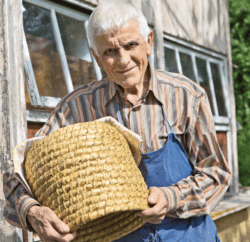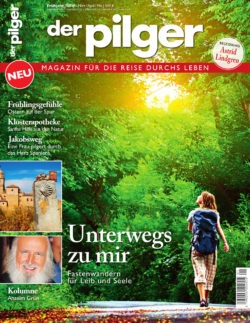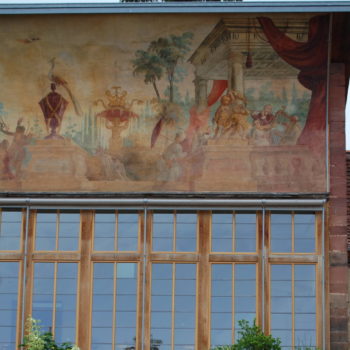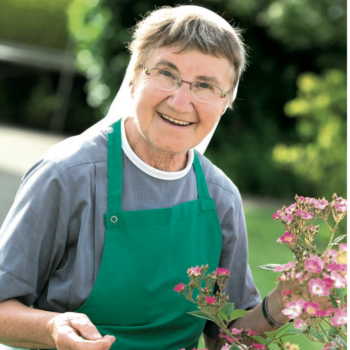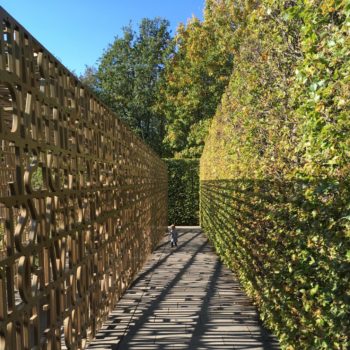A home in vivid colours for the bees

The Archabbey of Beuron is located in the Upper Danube Valley, not far from Sigmaringen, in a landscape conservation area. Even though it has a railway station and is visited by many pilgrims throughout the year, who can stay at the abbey’s hotel, one can hardly imagine a more peaceful and tranquil location for a monastery.
The Danube, which is still narrow here, flows around the monastery in a large arc, and all around the rocks rise steeply in a picturesque manner, thus providing ideal conditions for many different herbs and plants – and for keeping bees.
As a visitor you might be taken by surprise when you discover the colourfulness of the apiary located in the monastery garden. The monks use this garden for their own food supply, while Brother Felix also grows plants to produce herbal extracts made from marigolds or artichokes. However, the apiary at the edge of the garden is the unquestioned domain of Brother Siegfried. When I ask whether it was difficult for him to get used to working with bees, his answer is full of enthusiasm:
“Absolutely not. I have always loved animals of all kinds. I grew up on a small farm – my father was a low-ranking post office clerk – and this is where I got used to dealing with animals from my early childhood. The neighbour was keeping bees and I grew a particular interest in them. It’s just very simple: He who can cope with a cow can also do so with bees.”
Having spent some time as a beekeeper myself, I had to smile when I heard this, and wondered: What is more challenging, to protect oneself from the cow’s horns or from the bee’s stingers?
The 78-year-old wiry and active monk must admit: “In the beginning, it was a grind all day and night. This is because I had to take over the apiary from one day to the other when Brother Luitfried, the monastery’s beekeeper at that time, passed away. He was a professional master of beekeeping. I had helped him before, but now I was suddenly left alone with all the bees.”
At that time, there were 40 colonies at stake, and probably everyone who started beekeeping can still remember how much work it was to begin with maybe two or three colonies.
“The bees have been in Beuron for more than 100 years, and, in earlier times, there were up to 100 colonies. Nowadays, there are about 15 left in the apiary and another external beehouse. But indoors the bees are calmer, that’s where I like to work the most. Especially as I also have some images of the beekeeper’s patrons inside: John the Baptist, Ambrose of Milan and Bernard of Clairvaux. Most of the time I work alone, because unfortunately all those I trained left the monastery later on.”
But Brother Siegfried is far from being a solitary man. He enjoys a lively exchange with his colleagues from the regional beekeepers’ association of the city of Sigmaringen and is always up to date. “You learn the most from other beekeepers, not from theory,” says Brother Siegfried, who still wishes to study for the official title of a master beekeeper, if only he were younger.
 The garden of the Archabbey of Beuron is embellished by a stunning apiary hosting 15 bee colonies and providing many colourful landing zones for the bees. It is the unquestioned domain of Brother Siegfried who is in charge of the bees. Martin Erdmann, a member of our advisory board, visited him.
The garden of the Archabbey of Beuron is embellished by a stunning apiary hosting 15 bee colonies and providing many colourful landing zones for the bees. It is the unquestioned domain of Brother Siegfried who is in charge of the bees. Martin Erdmann, a member of our advisory board, visited him.
